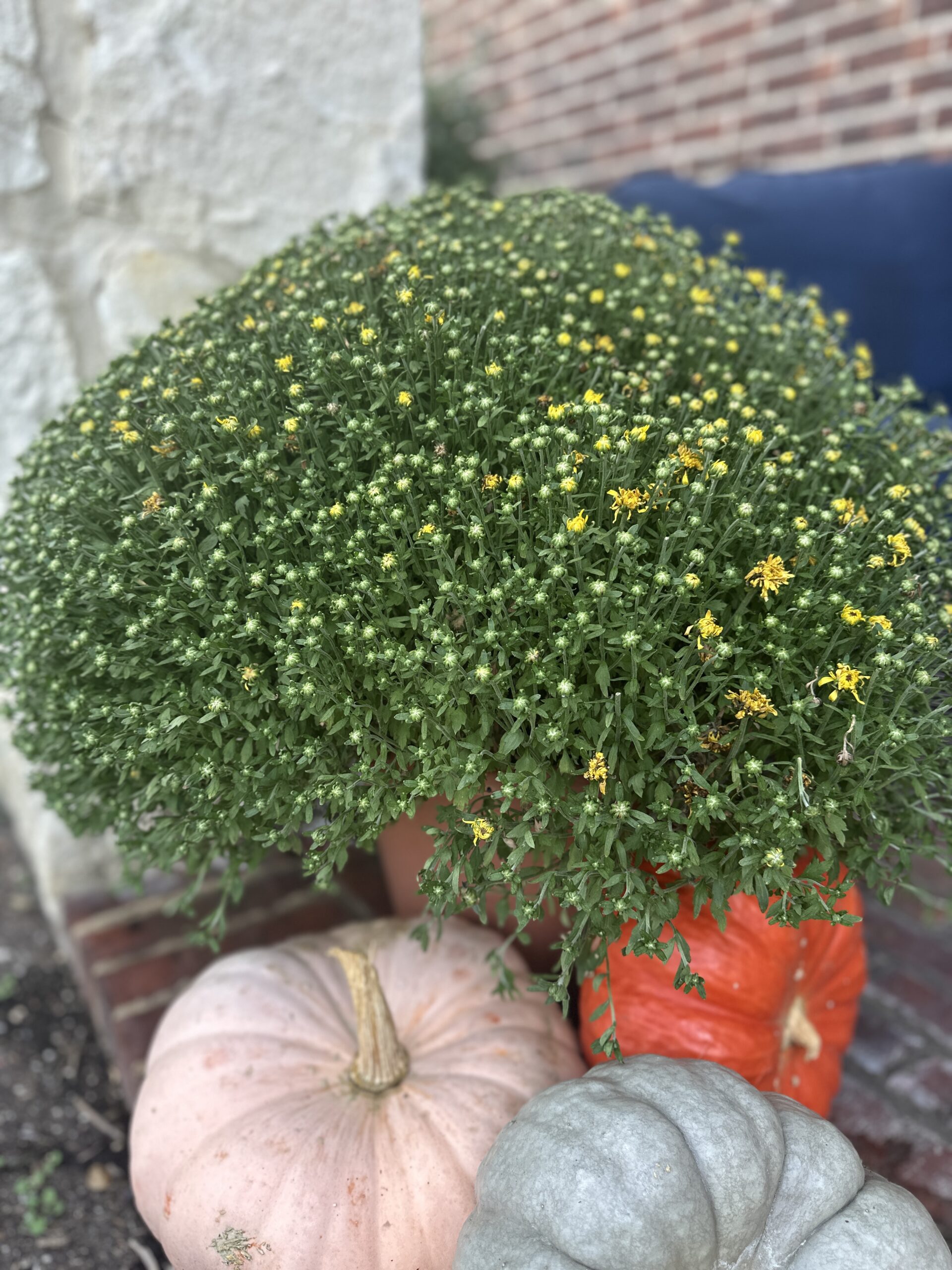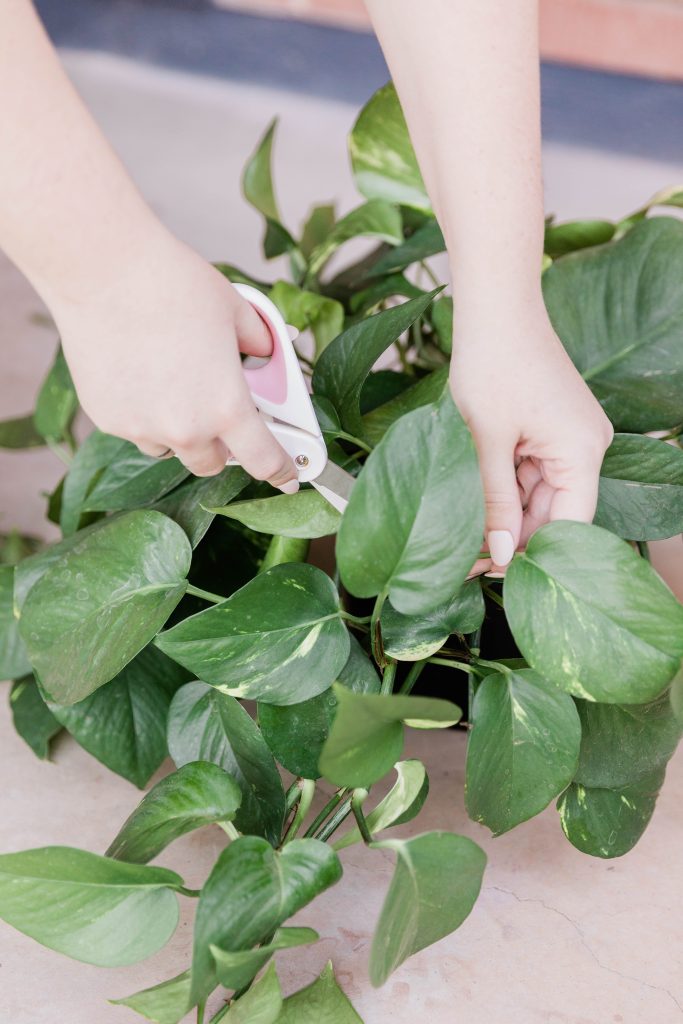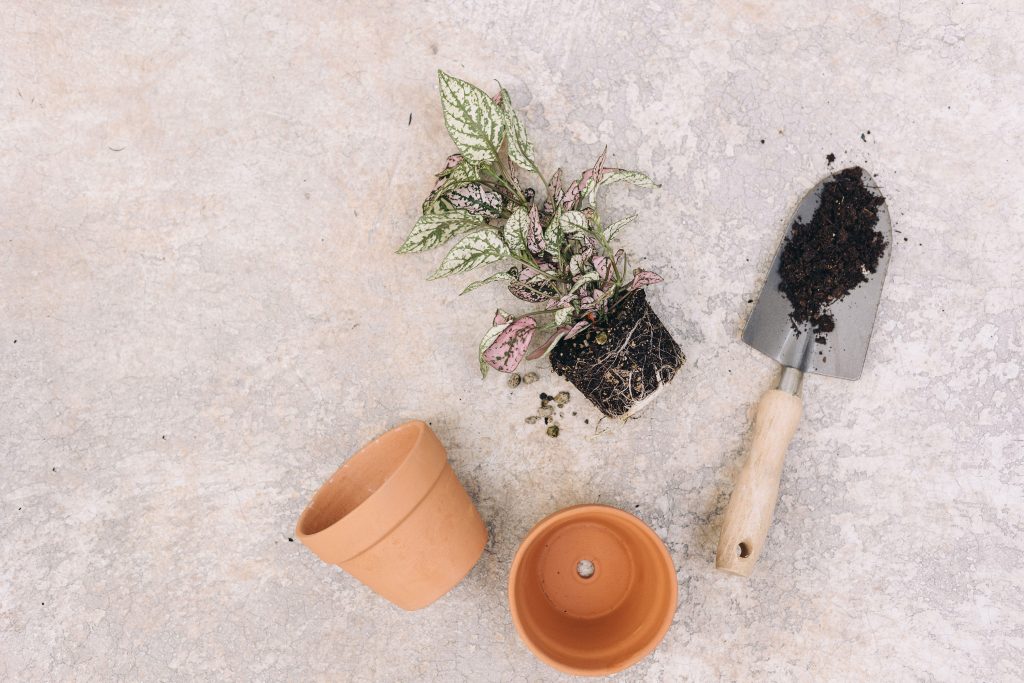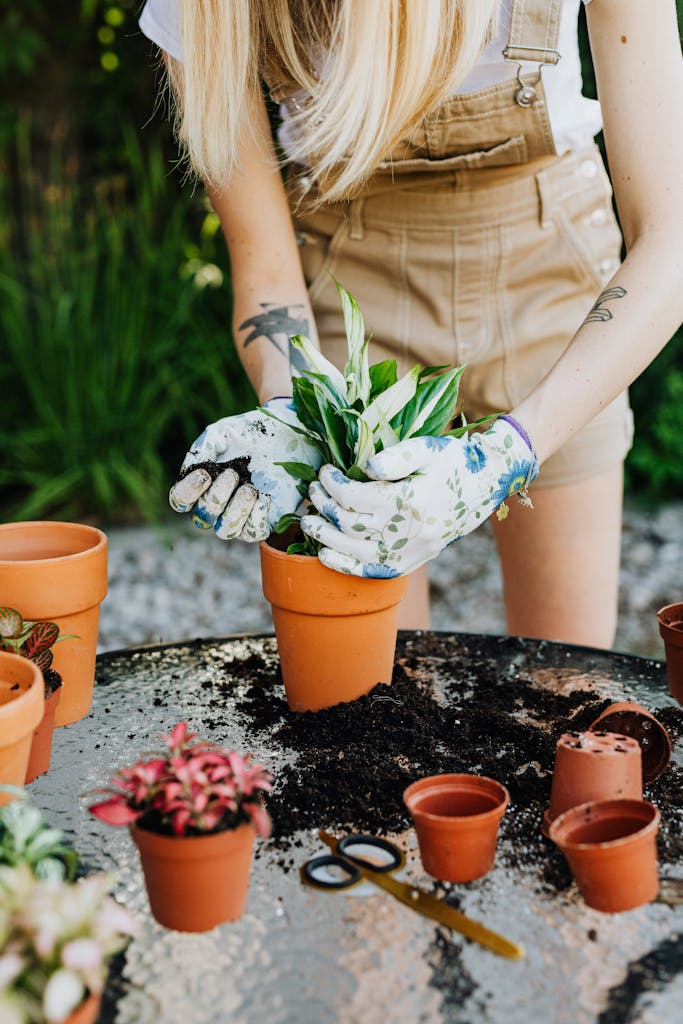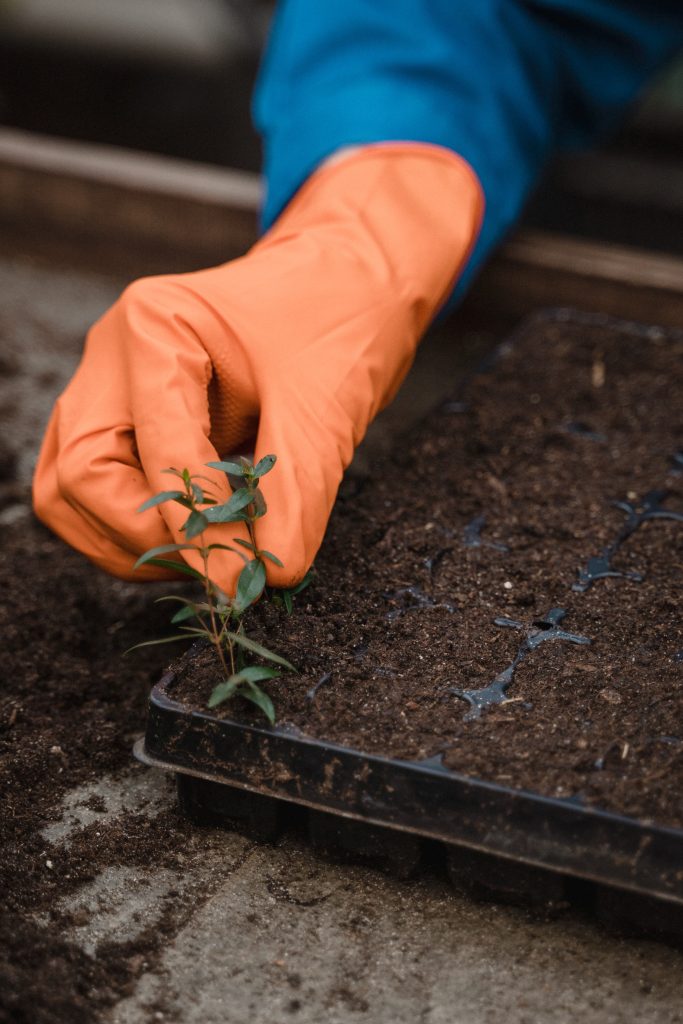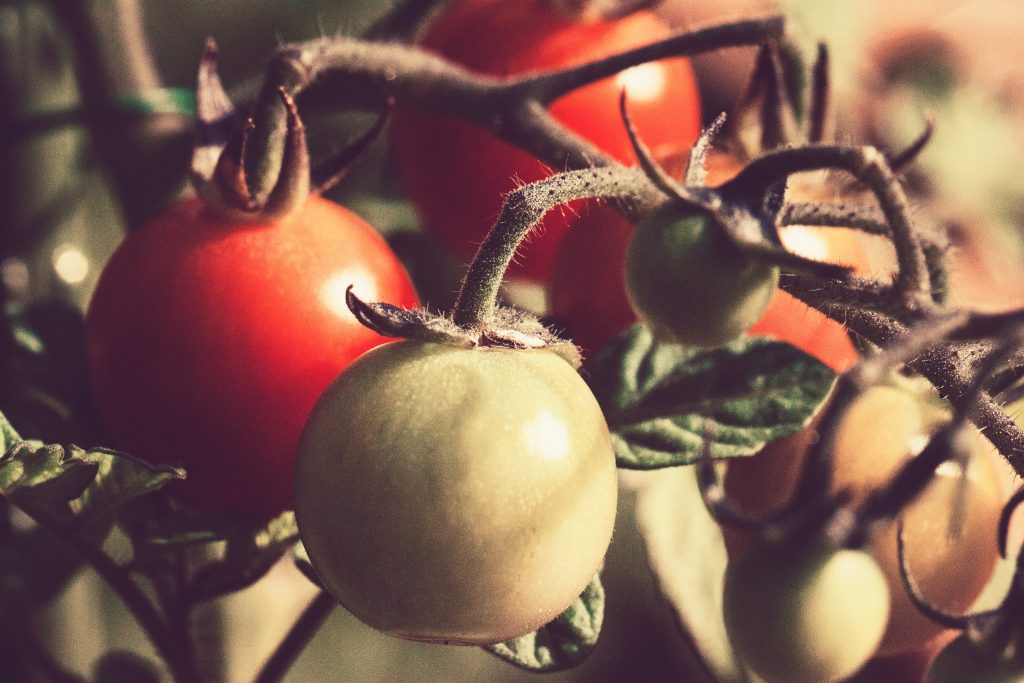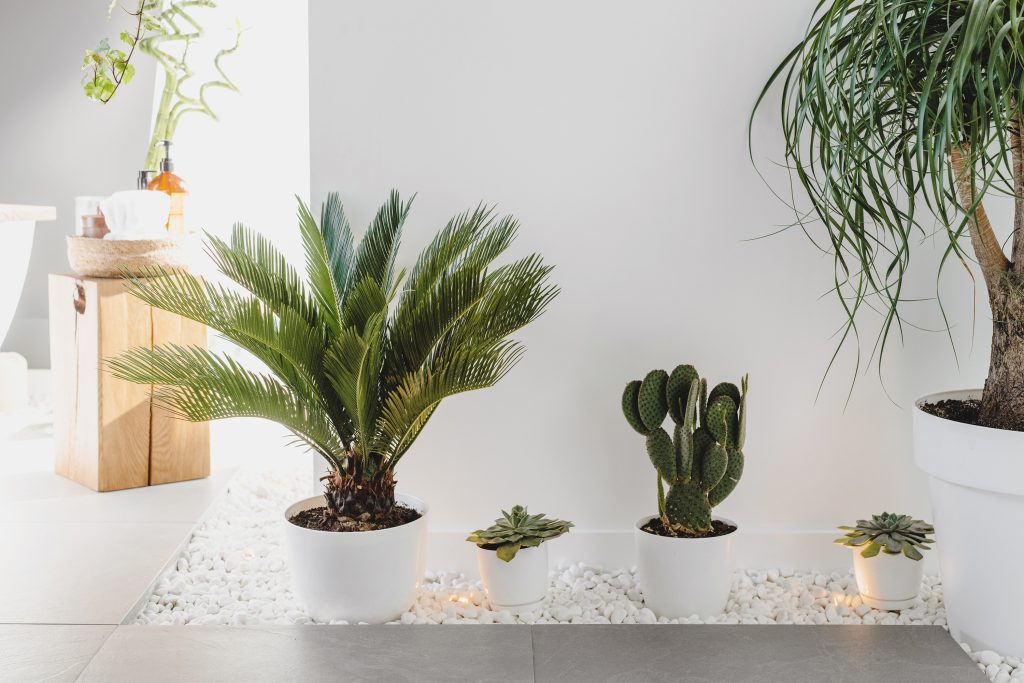How to Care for Mums in the Fall (Keep Them Blooming Longer)
When the air turns crisp and pumpkins appear on porches, mums take center stage, (especially in Texas!) I mean, the biggest chat on our city’s Facebook page is that Costco just got in their giant mums, so run to the store to grab yours before they sell out!
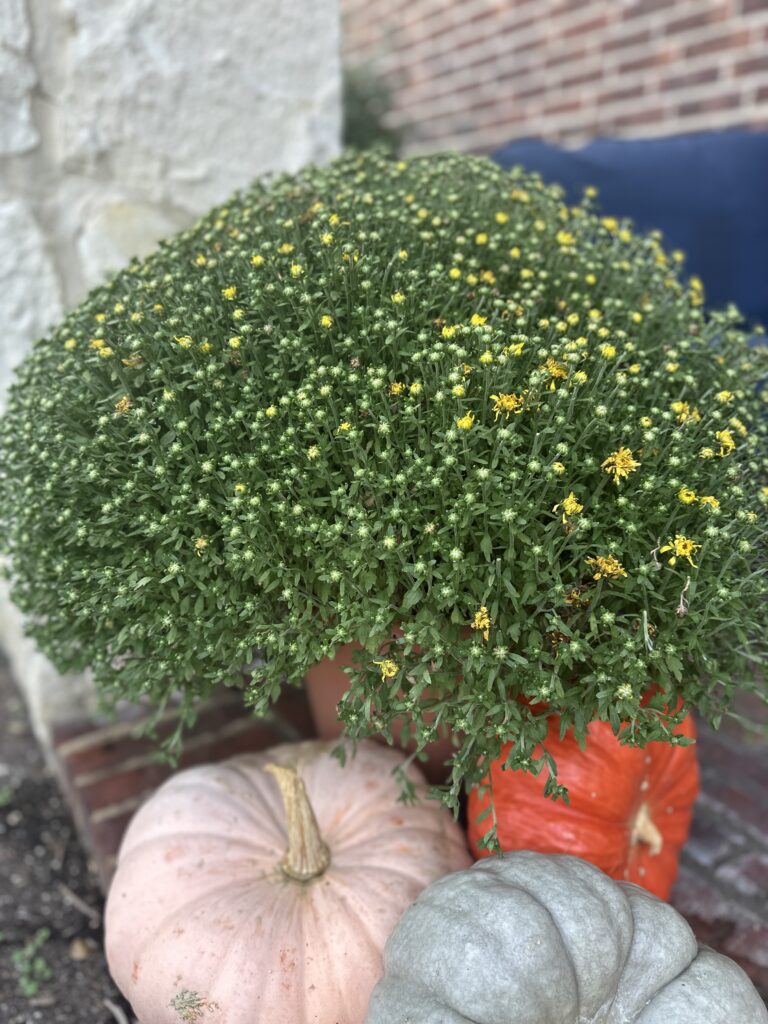
Mums provide colorful blooms and have become the shining star and fall’s signature flower, but many gardeners wonder: how to care for mums in the fall, how long do mums last, and what can you do to keep fall mums alive longer?
The secret is simple: start with healthy plants and give them the right balance of water, sunlight, and minimal maintenance. Here’s everything you need to know to keep your mums looking their best all season.

Choosing the Right Mum Plant
The way you shop for mums makes a big difference in how long they last.
- Look for tight buds. Plants with more buds than open blooms will last weeks longer.
- Check the foliage. Leaves should be green and healthy, not yellowing or wilted.
- Avoid dried-out soil. If the plant looks stressed in the store, it will fade faster at home.
How Long Do Mums Last in the Fall?
On average, mums bloom for 4–8 weeks. Buying them with closed buds means you’ll enjoy color for longer, while plants already in full bloom may fade in just a few weeks. With proper care, you can stretch their beauty until the first hard frost.
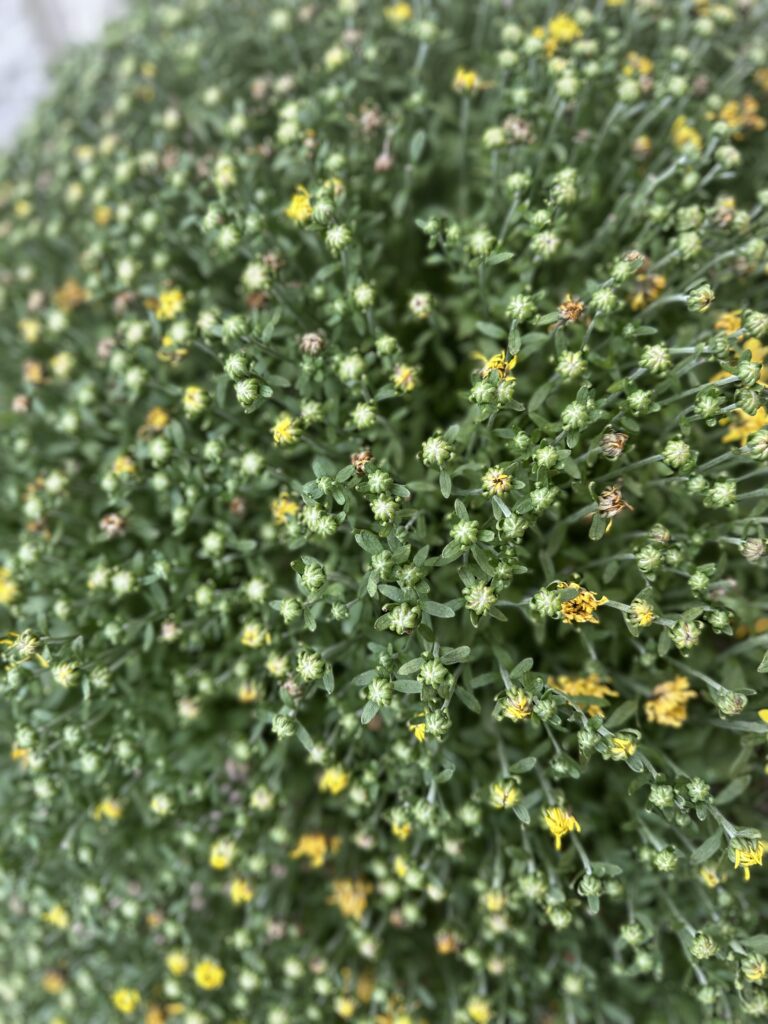
Watering: Keep Mums Moist but Not Soggy
Mums thrive on consistent moisture. If they dry out even once, the flowers can wilt quickly.
- Use the finger test. Stick your finger about an inch into the soil. If it feels dry, it’s time to water.
- Water deeply at the base. This keeps blooms dry and reduces the risk of fungal issues.
- Check daily in warm weather. Potted mums often need watering every day in sunny conditions. So, if it is warm outside, be sure you are checking often to see if it needs water.
Sunlight & Airflow: Keys to Longer Blooms
Mums are sun-lovers. To keep them blooming:
- Place them where they’ll get 6–8 hours of direct sunlight each day.
- Make sure they have good air circulation to help prevent mildew or mold.
- Rotate porch pots if your space is partly shaded.
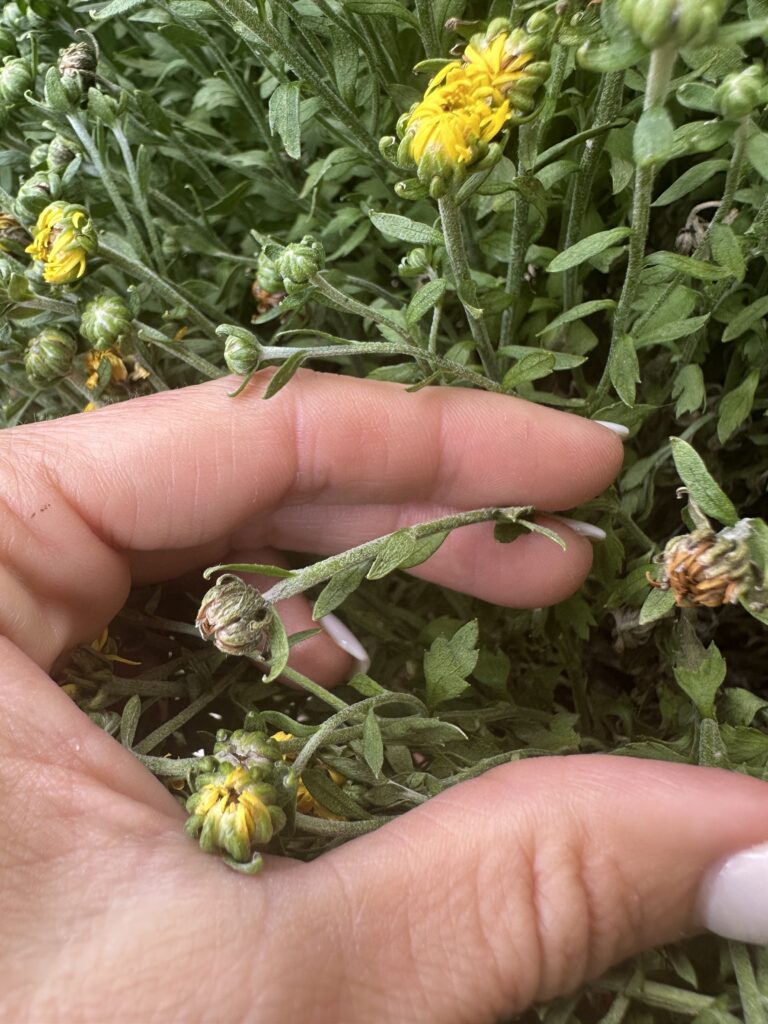
Pinching & Deadheading: Extend the Show
A little maintenance goes a long way.
- Deadhead regularly. Snip off faded blooms down to the next set of leaves to encourage new flowers.
- Pinch early buds. If you buy mums before they’ve opened, pinching back some buds can delay the show slightly but give you fuller, longer-lasting blooms.
Fertilizing: A Light Touch in the Fall
Most fall mums are sold already blooming, so they don’t need heavy fertilizer.
- Use a balanced liquid fertilizer every 2–3 weeks if desired. For mums in the fall, a balanced liquid fertilizer helps maintain strong blooms and healthy foliage without pushing too much leaf growth. Don’t know what a balanced liquid fertilizer is? We answer this in the FAQs below!
- Avoid overfeeding—too much nitrogen encourages leaf growth instead of flowers.
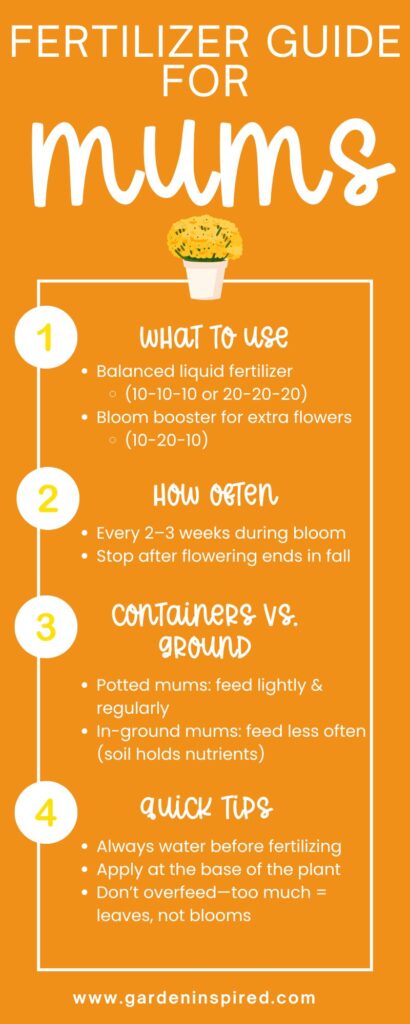
Protecting Mums from Frost
Even hardy mums will fade fast if hit by an early freeze. Protect them with these tricks:
- Move pots indoors or into a garage when frost is expected.
- Cover with a light blanket or sheet overnight, removing it in the morning.
- Group pots together for added warmth and insulation.
- Mulch the base of in-ground mums to protect the roots.
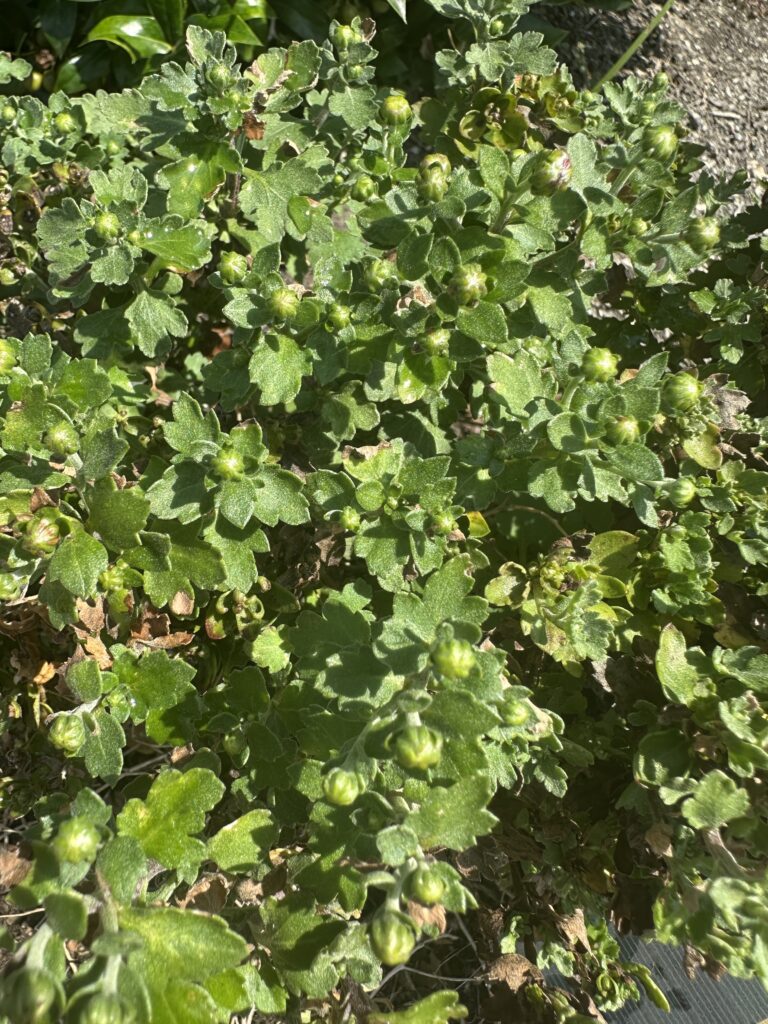
Florist vs. Garden Mums: What’s the Difference?
Not all mums are created equal:
- Florist mums (often sold at grocery stores) are usually treated as annuals. They’re grown for showy fall displays and rarely survive winter.
- Garden mums (also called hardy mums) are perennials in many regions. If planted in spring or early summer, they’ll return year after year.
If you want mums to come back, make sure you’re buying hardy garden mums and planting them early enough for roots to establish.
People Also Ask: Caring for Mums in the Fall
How long do mums last in the fall?
Mums usually last 4–8 weeks in the fall. Plants bought with tight buds will bloom longer than those already in full bloom.
Should mums be watered every day in the fall?
Not always. Check the soil daily, if the top inch feels dry, water deeply. Potted mums may need water every day in warm weather.
Do mums need full sun or shade in the fall?
Mums bloom best in full sun. They need at least 6 hours of direct sunlight daily to keep flowers vibrant and long-lasting.
Can I plant mums in the ground in the fall?
Yes, but fall planting gives them little time to establish roots before frost. For best results, plant hardy mums in spring or early summer.
How do you keep fall mums alive longer?
Keep the soil consistently moist, place them in full sun, and remove spent flowers (by deaadheading). Protect them from frost with covers (or blankets) or by moving pots indoors.
Will mums come back every year if planted in fall?
Florist mums are annuals and won’t return. Garden mums are perennials, but late fall planting makes survival less likely during their first winter.
Should mums be fertilized in the fall?
Light fertilizer every 2–3 weeks can help maintain blooms, but avoid heavy feeding. Too much fertilizer encourages leaves instead of flowers.
What is a balanced liquid fertilizer?
A balanced liquid fertilizer has equal parts nitrogen (N), phosphorus (P), and potassium (K). Labels show this as numbers like 10-10-10 or 20-20-20. Because it’s liquid, it’s mixed with water and absorbed quickly by the soil.
What fertilizer makes mums bloom best?
Mums bloom best with a fertilizer that has a slightly higher phosphorus content to encourage flower production. A balanced fertilizer works well in fall, while a bloom booster (with more middle number, like 10-20-10) can give flowers an extra push.
How often should I fertilize mums in the fall?
If your mums are already blooming, fertilize lightly every 2–3 weeks with a diluted liquid fertilizer. Too much fertilizer late in the season won’t extend blooms and can lead to more leaves instead of flowers.
Should I fertilize mums in pots differently than mums in the ground?
Yes. Potted mums dry out faster and lose nutrients more quickly, so they benefit from regular light feeding with liquid fertilizer. In-ground mums need less frequent fertilizing, especially if your soil is already rich.
Do mums need fertilizer after they finish blooming?
Once mums are finished blooming in the fall, stop fertilizing. Feeding after bloom encourages leafy growth when the plant should be conserving energy for winter. Resume fertilizing in spring if you’re overwintering hardy mums.
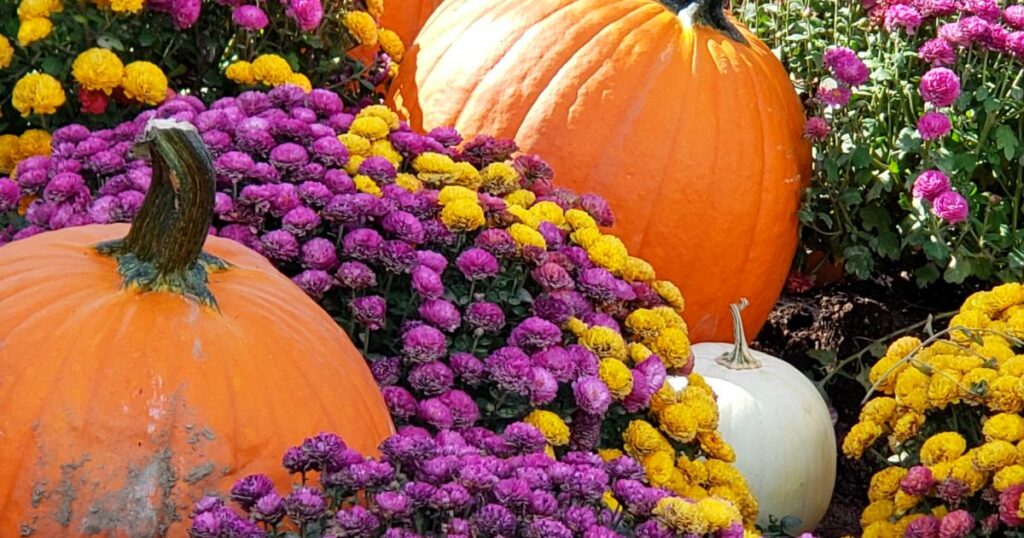
Final Thoughts
Learning how to care for mums in the fall is the key to keeping their cheerful blooms around longer. With smart watering, plenty of sunshine, and a little frost protection, you’ll enjoy weeks of vibrant color. And if you choose hardy mums, you may even see them return year after year.
So grab a few pots of mums this season, give them a little love, and enjoy one of the most beautiful parts of fall.

